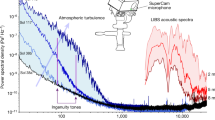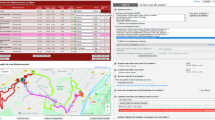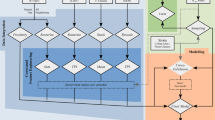Abstract
RECENT observations of radio noise from the upper atmosphere mainly at a frequency of 5 kc./s. have shown that it appears frequently to come from sources of limited geographical size. For example, records of the noise amplitude at places only 1,000 km. apart differ considerably in their time variations, while directional measurements of the apparent noise sources have suggested that they are sometimes as small as 500 km. in extent1–3.
This is a preview of subscription content, access via your institution
Access options
Subscribe to this journal
Receive 51 print issues and online access
$199.00 per year
only $3.90 per issue
Buy this article
- Purchase on SpringerLink
- Instant access to full article PDF
Prices may be subject to local taxes which are calculated during checkout
Similar content being viewed by others
References
Ellis, G. R. A., Planet. Space Sci., 1, 253 (1959).
Ellis, G. R. A., Cartwright, D. G., and Groves, J. R., Nature, 184, Supp. No. 18 (1959).
Ellis, G. R. A., J. Geophys. Res. (in the press).
Aarons, J., Gustafsson, G., and Egeland, A., Nature, 185, 148 (1960).
Helliwell, R. A., ‘Agard’ Symposium on the Upper Atmosphere, Paris, May 1959.
Author information
Authors and Affiliations
Rights and permissions
About this article
Cite this article
ELLIS, G. Observations of Atmospheric Radio Noise. Nature 186, 229 (1960). https://doi.org/10.1038/186229a0
Issue date:
DOI: https://doi.org/10.1038/186229a0



